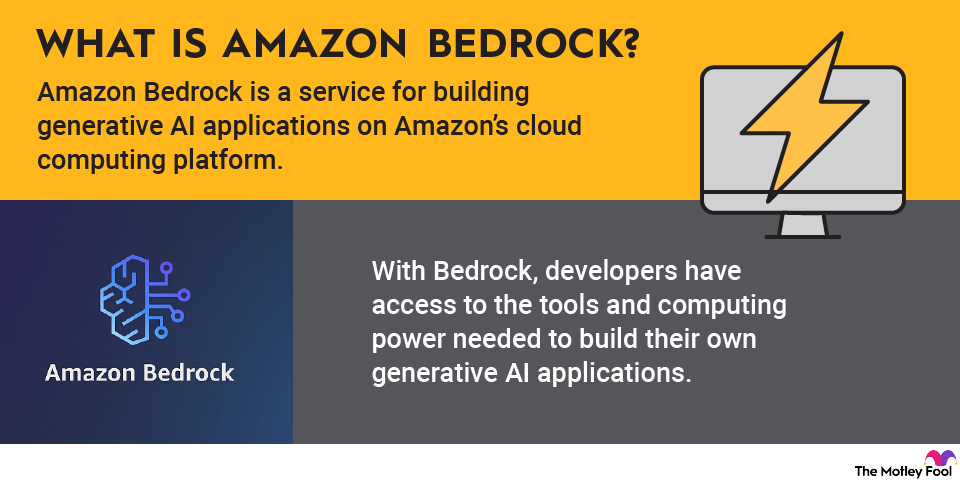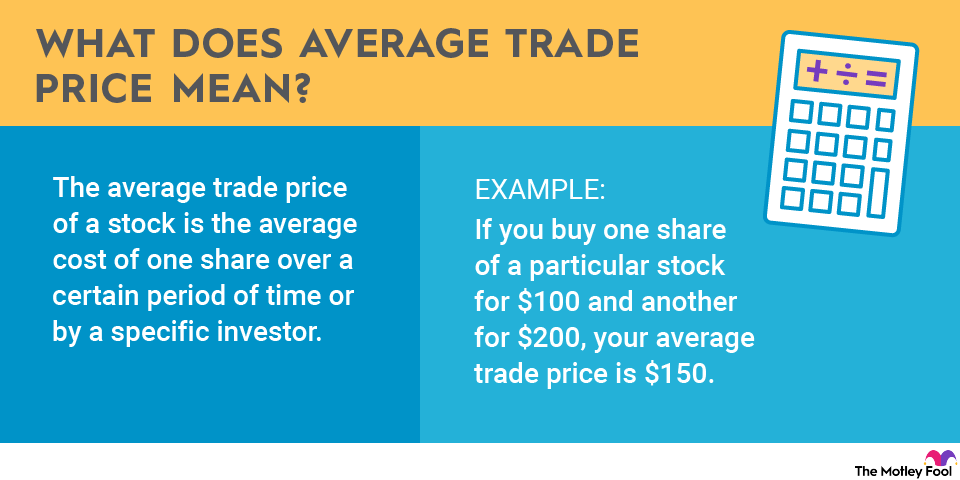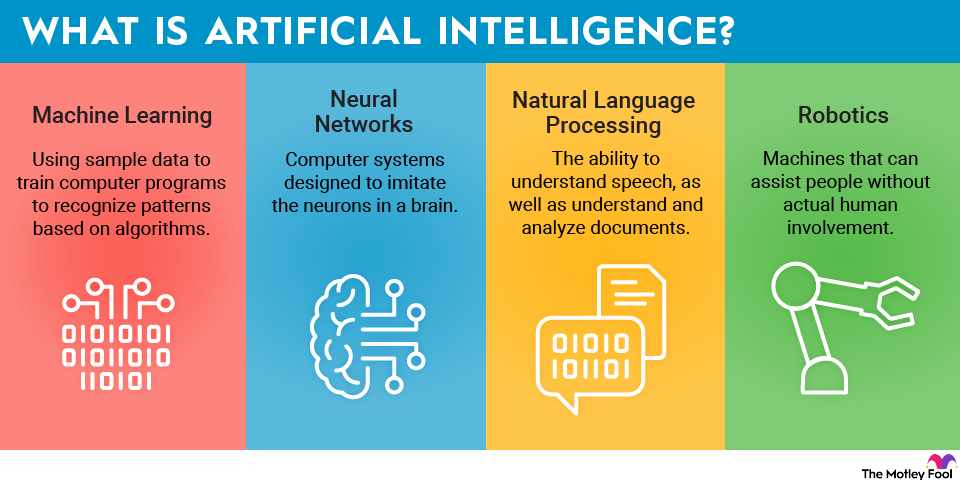Avalanche (AVAX +2.24%) is a multi-chain smart contract platform made for launching decentralized apps (dApps). It's one of several competitors to Ethereum (ETH +3.19%), but it has a key advantage in that it's also compatible with Ethereum.
The Avalanche platform experienced massive growth in 2021, including a 470% increase in its average daily transactions. Its native cryptocurrency token, AVAX, was even more successful, growing by more than 3,300%. Keep reading to learn more about Avalanche, including how it works and if it's a good investment.

What makes Avalanche unique?
Avalanche is a blockchain network with smart contract functionality. That gives it a variety of uses, including its main purpose of building dApps, as well as non-fungible tokens (NFTs) and blockchain gaming.
It's far from the only blockchain network with those capabilities, but the developers have added several features that set it apart:
- Avalanche has three blockchains, with each handling different tasks instead of just one. By dividing the work among multiple blockchains, Avalanche is extremely efficient. It can process more than 4,500 transactions per second and finalize a transaction in less than two seconds.
- Avalanche allows users to create new blockchains that run on its network. These blockchains can have their own tokens and fee structures.
- Avalanche is fully compatible with Ethereum. Tokens can be transferred from Ethereum to Avalanche using the Avalanche Bridge, and Ethereum smart contracts can be deployed on Avalanche with the exact same code.
Another unique feature of Avalanche is its consensus mechanism, or how it securely validates transactions. It uses its own system, Avalanche consensus, which is designed to be secure, fast, and energy-efficient.
Where Avalanche came from
In 2018, a white paper describing Avalanche was first shared on InterPlanetary File System, a peer-to-peer network, by a group that went by the name "Team Rocket." Researchers at Cornell University, led by computer scientist and blockchain expert Emin Gün Sirer, developed the idea. They created the Avalanche blockchain network and a technology company called Ava Labs to manage it.
AVAX tokens were first sold through a seed sale in February 2019. This was followed by another private sale in May 2020 and an initial coin offering (ICO) in July 2020. Ava Labs launched Avalanche on Sept. 21, 2021. It’s been widely reported that Ava Labs is conducting a significant new round of funding in 2022 that would make it one of the most valuable crypto start-ups.
How Avalanche works
Avalanche’s primary network supports three built-in blockchains that handle different tasks. Here are each of the blockchains and how they work:
- Exchange Chain (X-Chain): A decentralized platform for creating and trading digital assets, such as crypto tokens. Transaction fees on the X-Chain are paid using AVAX.
- Platform Chain (P-Chain): The metadata platform that coordinates Avalanche's validators. It also tracks and enables the creation of new subnets, which allow developers to create their own blockchains.
- Contract Chain (C-Chain): The blockchain that allows for the creation of smart contracts. It uses the Ethereum Virtual Machine powered by Avalanche.
Transactions are validated using the Avalanche consensus protocol and a proof-of-stake system. This protocol uses repeated sub-sampled voting to reach a consensus.
When a validator is processing a transaction, it surveys a small, random subset of validators. Each of those validators replies with a recommendation to either accept or reject the transaction.
The process continues until enough of the validators reply the same way. If there are no conflicts, which is often the case, the entire validation process can happen very quickly. If there are conflicts, the voting process will continue until non-conflicting transactions are accepted and conflicting transactions are rejected.
Partnerships
Ava Labs, the company behind Avalanche, is working with big-name companies across the finance and crypto industries. Here are highlights of the deals and partnerships Ava Labs has set up so far:
- Mastercard (MA +0.02%) chose Ava Labs for its Start Path Crypto program. The accelerator program is designed to help crypto and blockchain start-ups scale their businesses.
- Deloitte, one of the Big Four accounting firms, partnered with Ava Labs and is using Avalanche to improve its cloud-based Close As You Go platform. The platform assists state and local governments with distributing disaster reimbursement payments.
- BitGo, an institutional digital asset custodian, added AVAX support in December 2021. This allows BitGo's clients, which include multiple large crypto exchanges, to offer AVAX to investors.
More good news for Avalanche is that it has quickly attracted projects to its network, particularly in the popular decentralized finance (DeFi) space. The Avalanche ecosystem has more than 150 projects, including:
- DeFi protocol 1inch (CRYPTO:1INCH)
- Lending protocol Aave (AAVE +2.02%)
- dApp discover platform DappRadar
- Crypto-friendly payments company Wyre
- A $290 million “Avalanche Multiverse” initiative to promote development of new permissioned or permissionless blockchains using Avalanche’s subnet feature. The subnets are new blockchains that don’t compete with other projects for resources, providing even more scalability.
Can I make passive income with Avalanche?
You can make passive income by staking Avalanche. When you stake crypto, you're pledging it to a blockchain as collateral so that it can secure the network and validate transactions. By staking your AVAX tokens, you'll earn rewards as new blocks of transactions are added to the blockchain.
One easy way to stake is through a crypto platform. Okcoin is an option that support Avalanche staking:
You can also stake Avalanche on your own with a crypto wallet, but there are minimum balance requirements to do so. To be a delegator and pledge your crypto to a validator, you need at least 25 AVAX. To be a validator who confirms transactions, you need at least 2,000 AVAX.
Related investing topics
Unique risks
While Avalanche doesn't have any glaring flaws, it's still a fairly new project in an extremely competitive space. Many of the top smart contract blockchains began development years before Avalanche, giving them more time to get established. And, there are always new projects aiming to leapfrog market leaders -- just like Avalanche did during its rise.
There's also debate about whether the Avalanche network is truly decentralized. The project is run by Ava Labs, which has quite a bit of influence. In all fairness, most of the organizations behind the major blockchain projects play a large role in their operation, so Avalanche isn't alone in this regard.
Is Avalanche a good investment?
With its design and a growing ecosystem, Avalanche has the potential for long-term growth. Already, financial services firm Valkyrie Investments announced creation of a fund in May 2022 to solely invest in Avalanche-related assets. At the same time, it has plenty of innovative competition, and, like other cryptocurrency investments, its value is volatile.
To Avalanche's credit, the network's multiple blockchains and the Avalanche consensus mechanism have worked very well. Transaction fees are low, and, according to Avalanche, its transaction time-to-finality is faster than any other blockchain.
Avalanche has had very impressive growth so far. By the end of 2021, it had more than $11 billion in total value locked (TVL) on its platform, a 227% increase from the start of the year. It also ranked fourth in TVL as of April 2022.
While Avalanche is positioned well at the moment, it's hard to predict which smart contract blockchains will be the most successful. Investors who aren't attached to any one particular project may want to spread their money among multiple options.
If you decide to invest in Avalanche, remember that the price can and likely will fluctuate considerably. It's recommended to only make crypto a small portion of your overall portfolio because of the risk. Also, make sure you commit to holding it for five years or longer so it has time to grow.
How to buy Avalanche
Several of the biggest U.S. and international crypto exchanges list Avalanche, so it's easy to buy if you have an account with one of them or don't mind registering for one. Here are a few places to buy Avalanche:
- Coinbase Global (COIN -2.04%)
- Crypto.com
- Binance.US
- Binance (for investors outside the U.S.)
In a short period of time, Avalanche has emerged as one of the top blockchain networks. If it keeps attracting new projects, it should be able to build on that success.



















